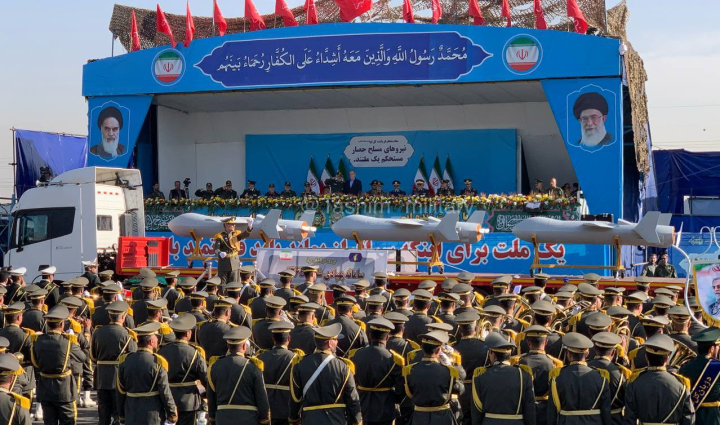Iran is ramping up its long-range drone arsenal, unveiling an upgraded version of its well-known Shahed-136.
During Iran's Sacred Defence Week military parade, the country unveiled an updated version of its popular Shahed drone. Formerly known as the Shahed-136, the new model is now the Shahed-136B.
The key upgrade is its range. The previous model started with a 1,500 km range, later extended to 2,500 km. Now, the Shahed-136B can fly up to 4,000 km and remain airborne for over 10 hours, carrying a 50-kg warhead.
Details about the new Shahed-136B remain scarce. It's unclear if all flight tests have been completed or if its effectiveness has been proven. There's also no information on whether Iran plans to sell the technology. Local reports mention "improvements" beyond the increased range, but specifics have not been disclosed.
Iran unveiled its latest ballistic missile "Jihad" and "Shahed 136 B" during a parade on the occasion of Sacred Defense Week.
— Press TV 🔻 (@PressTV) September 21, 2024
Jihad is the latest liquid fuel ballistic missile of the IRGC Aerospace Force, with a high-explosive detachable warhead, and a range of 1000 km. pic.twitter.com/uFvn7zG3OZ
The Shahed-136B could represent a new class of Iranian weaponry. Earlier developments primarily targeted Israel, either directly or via proxies, with ranges between a few dozen kilometers and 2,000 km. Russia has since adapted these drones, producing them domestically and launching over 500 per month at Ukraine, capable of hitting any point in the country.
The extended range dramatically alters the strategic landscape. The Shahed-136B can now strike two of NATO’s largest military bases—the base in Romania and Ramstein in Germany—in a single flight from Iran. If Iran sells this technology to Russia, which remains unconfirmed, much of Europe could be at risk.
International observers point out that while Iran is attempting to engage with the U.S. and Europe, Russia continues to provoke the West with nuclear threats, Shahed, and missile strikes on Poland and Romania, as well as sabotage and espionage efforts.

Russia already operates a Shahed production plant and has modified the drone by enlarging its fuel tanks to extend its range. The country can now produce more than 500 units per month for $100 million, and it plans to ramp up production further.
With constant upgrades, downing Shaheds in 2024 has become much more difficult than when they were first deployed in 2022. If Iran sells this new technology to Russia, the threat will escalate: these advanced Shaheds will fly farther and faster, requiring more sophisticated defense systems and increased Western support to counter them.
Jihad missile
Iran also unveiled a ballistic missile named Jihad at the military parade. Few details are available: it has an estimated range of 1,000 km and is armed with a fragmentation high-explosive warhead, though the warhead size has not been disclosed.

The missile’s stage of readiness and its expected deployment timeline remain unclear.
The Jihad missile signals Iran’s continued efforts to advance its missile program, as the country continues to upgrade and expand its arsenal. Iran already possesses several types of cruise and ballistic missiles with varying ranges.
-29a1a43aba23f9bb779a1ac8b98d2121.jpeg)
-6359eca46c72bde40a90abaaadd6eaa8.png)


-206008aed5f329e86c52788e3e423f23.jpg)
